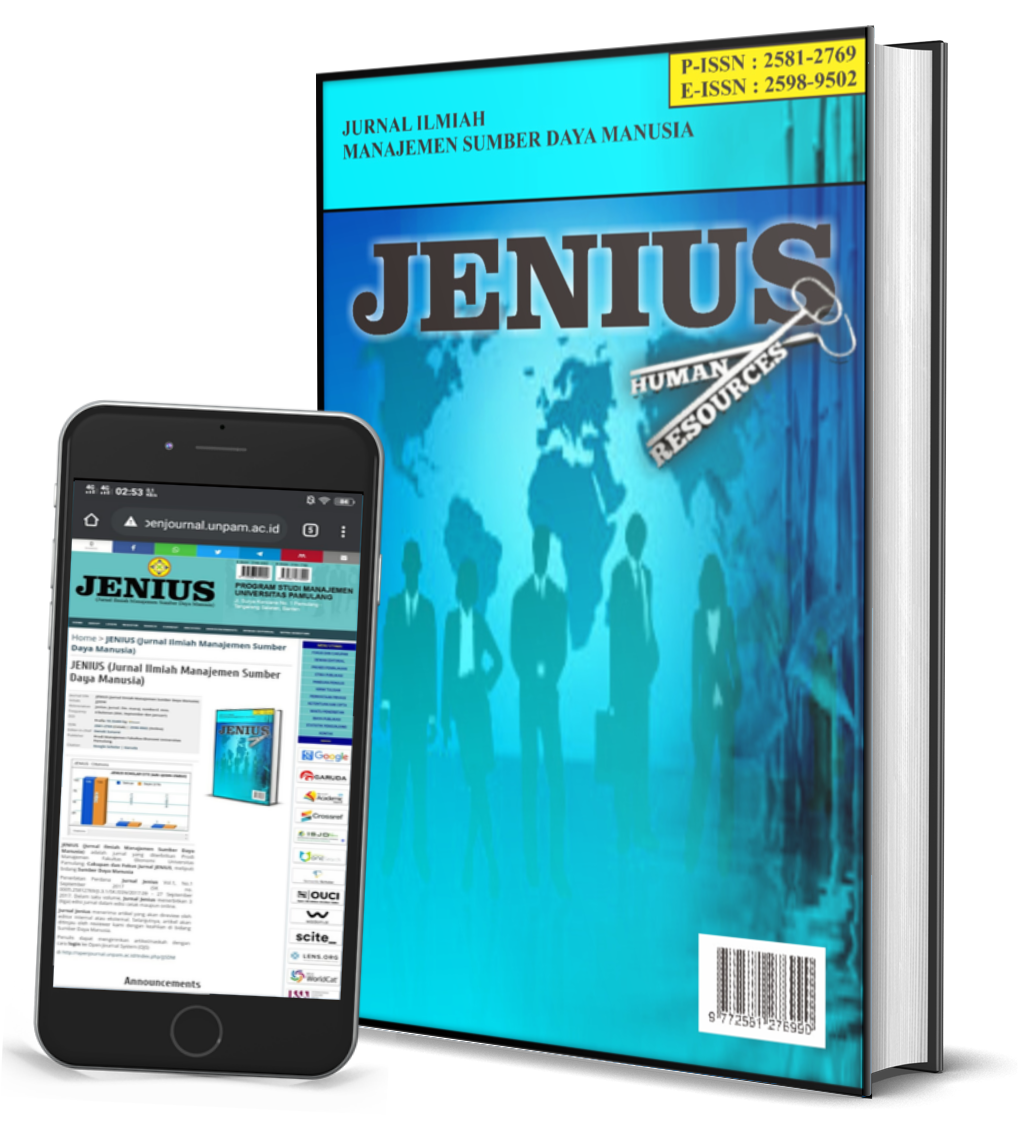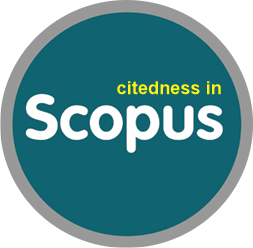The Role of Leadership and Talent Development in Enhancing Employee Performance
DOI:
https://doi.org/10.32493/JJSDM.v8i2.44627Abstract
This study is motivated by the importance of talent development and leadership in enhancing employee performance in e-commerce companies in Indonesia. Employee performance is a key factor in achieving organizational goals, and talent development as well as leadership are considered crucial in this regard. The purpose of this study is to analyze the impact of talent development and leadership on employee performance and to examine whether leadership moderates the relationship between talent development and performance. The study employs multiple linear regression methods to analyze data collected from 131 respondents. The results indicate that both talent development and leadership significantly influence employee performance. Hypothesis testing reveals that talent development and leadership have a significant positive relationship with employee performance, with leadership having a more dominant influence. However, moderation analysis shows that leadership does not significantly moderate the relationship between talent development and employee performance. The conclusion of this study is that talent development and leadership are important factors in improving employee performance, but leadership does not significantly moderate the relationship between talent development and performance. Therefore, e-commerce companies in Indonesia are advised to focus more on talent development and leadership to achieve optimal employee performance.
References
1. Pramudya, N. a. A., Purnama, N. M. R., Andarbeni, N. N. S., Nurjayanti, N. P., & Anshori, N. M. I. (2023). Implementasi Budaya Kerja Dan Gaya Kepemimpinan Terhadap Peningkatan Kinerja Karyawan. SAMMAJIVA Jurnal Penelitian Bisnis Dan Manajemen, 1(4), 24–40. https://doi.org/10.47861/sammajiva.v1i4.505
2. Arifin, A. H., Raza, H., Saputra, J., & Puteh, A. (2020). The influence of recruitment and career development towards employee performance: a mediating role of competence. Journal of Talent Development and Excellence, 12(1), 1040–1055. http://iratde.com/index.php/jtde/article/view/703
3. Bailey, K., & Breslin, D. (2021). The COVID‐19 Pandemic: What can we learn from past research in organizations and management? International Journal of Management Reviews, 23(1), 3–6. https://doi.org/10.1111/ijmr.12237
4. CNBC Indonesia. (2023, November 21). 9 e-commerce yang tutup kalah bersaing di Indonesia. Retrieved October 10, 2024, from https://www.cnbcindonesia.com/tech/20231121061717-37-490587/9-ecommerce-yang-tutup-kalah-bersaing-di-indonesia
5. CNN Indonesia. (2020, October 21). Transaksi e-commerce naik nyaris dua kali lipat saat pandemi. Retrieved October 10, 2024, from https://www.cnnindonesia.com/ekonomi/20201021193353-92-561232/transaksi-e-commerce-naik-nyaris-dua-kali-lipat-saat-pandemi
6. CNN Indonesia. (2022, December 14). Mencari biang kerok ramai-ramai e-commerce tumbang dan PHK karyawan. Ekonomi. Retrieved October 10, 2024, from https://www.cnnindonesia. com/ekonomi/20221214070353-92-887108/mencari-biang-kerok-ramai-ramai-e-commerce-tumbang-dan-phk-karyawan
7. Collings, D. G., McMackin, J., Nyberg, A. J., & Wright, P. M. (2021). Strategic Human Resource Management and COVID‐19: Emerging Challenges and Research Opportunities. Journal of Management Studies, 58(5), 1378–1382. https://doi.org/10.1111/joms.12695
8. Fuente, D., & Bartram, J. (2018). Pro-poor governance in water and sanitation service delivery: evidence from Global Analysis and Assessment of Sanitation and Drinking Water surveys. Perspectives in Public Health, 138(5), 261–269. https://doi.org/10.1177/1757913918788109
9. Hee, O. C., Halim, M. A., Ping, L. L., Kowang, T. O., & Fei, G. C. (2019). The Relationship between Human Resource Management Practices and Job Performance in the Courier Service Industry. International Journal of Academic Research in Business and Social Sciences, 9(3). https://doi.org/10.6007/ijarbss/v9-i3/5630
10. Iskamto, D. (2020). The Role of Leadership and Influence on Employee Performance in Digital Era. Jurnal Manajemen Bisnis, 17(4), 470–484. https://doi.org/10.38043/jmb.v17i4.2730
11. Anwar, G., & Abdullah, N. N. (2021). The impact of Human resource management practice on Organizational performance. International Journal of Engineering Business and Management, 5(1), 35–47. https://doi.org/10.22161/ijebm.5.1.4
12. Kafetzopoulos, D. (2022). Talent development: a driver for strategic flexibility, innovativeness and financial performance. EuroMed Journal of Business, 18(2), 296–312. https://doi.org/ 10.1108/emjb-02-2022-0042
13. Kafetzopoulos, D., Psomas, E., & Bouranta, N. (2022). The influence of leadership on strategic flexibility and business performance: the mediating role of talent management. Management Decision, 60(9), 2532–2551. https://doi.org/10.1108/md-10-2021-1310
14. Niati, D. R., Siregar, Z. M. E., & Prayoga, Y. (2021). The Effect of Training on Work Performance and Career Development: The Role of Motivation as Intervening Variable. Budapest International Research and Critics Institute (BIRCI-Journal) Humanities and Social Sciences, 4(2), 2385–2393. https://doi.org/10.33258/birci.v4i2.1940
15. Katadata Team. (2022). 10 e-commerce dengan karyawan terbanyak pada kuartal II 2022. Databoks. Retrieved from https://databoks.katadata.co.id/datapublish/2022/12/16/10-e-commerce-dengan-karyawan-terbanyak-pada-kuartal-ii-2022#:~
16. Lapointe, É., & Vandenberghe, C. (2016). Supervisory mentoring and employee affective commitment and turnover: The critical role of contextual factors. Journal of Vocational Behavior, 98, 98–107. https://doi.org/10.1016/j.jvb.2016.10.004
17. Norawati, S., Lutfi, A., Zulher, Z., & Basem, Z. (2022). The Effect of Supervision, Work Motivation, and Interpersonal Communication on Employee Performance and Organizational Commitment as Variables Intervening. IJEBD (International Journal of Entrepreneurship and Business Development), 5(1), 92–104. https://doi.org/10.29138/ijebd.v5i1.1602
18. Lee, J. Y., Yahiaoui, D., Lee, K., & Cooke, F. L. (2022). Global talent management and multinational subsidiaries’ resilience in the Covid‐19 crisis: Moderating roles of regional headquarters’ support and headquarters–subsidiary friction. Human Resource Management, 61(3), 355–372. https://doi.org/10.1002/hrm.22100
19. Chilunjika, A., Intauno, K., & Chilunjika, S. R. (2022). Artificial intelligence and public sector human resource management in South Africa: Opportunities, challenges and prospects. SA Journal of Human Resource Management, 20. https://doi.org/10.4102/sajhrm.v20i0.1972
20. Aina, R. A., & Atan, T. (2020). The Impact of Implementing Talent Management Practices on Sustainable Organizational Performance. Sustainability, 12(20), 8372. https://doi.org/ 10.3390/su12208372
21. Karim, Md. M., Choudhury, M. M., & Latif, W. B. (2019). The Impact Of Training And Development On Employees’ Performance: An Analysis Of Quantitative Data. The International Journal of Business and Management Research, 02–02, 25–33. https://www.napublisher.org
22. Goestjahjanti, F. S., Novitasari, D., Hutagalung, D., Asbari, M., & Supono, J. (2020). Impact Of Talent Management, Authentic Leadership And Employee Engagement On Job Satisfaction: Evidence From South East Asian Industries. Journal of Critical Reviews, 7(19), 67–88. http://www.jcreview.com/?mno=101983
23. Nama, K., Daweti, B., Lourens, M., & Chikukwa, T. (2022). The impact of training and development on employee performance and service delivery at a local municipality in South Africa. Problems and Perspectives in Management, 20(4), 42–51. https://doi.org/10.21511/ ppm.20(4).2022.04
24. Nasution, E. Y., Hariani, P., Hasibuan, L. S., & Pradita, W. (2020). Perkembangan Transaksi Bisnis E-Commerce terhadap Pertumbuhan Ekonomi di Indonesia. Jesya (Jurnal Ekonomi & Ekonomi Syariah), 3(2), 506–519. https://doi.org/10.36778/jesya.v3i2.227
25. Northouse, P. G. (2015). Leadership : Theory and Practice. http://cds.cern.ch/record/1630817
26. Rahmadhon, G., Firdaus, V., & Sumartik, S. (2024). The mediating role of work motivation: The effect of leadership, workload, and reward on employee performance. Jurnal Fokus Manajemen Bisnis, 14(2), 190–208. https://doi.org/10.12928/fokus.v14i2.10704
27. Bakar, H. A., & Connaughton, S. L. (2023). Ethical leadership communications scale: Development and validation of a measure and multi-level test. Journal of General Management, 030630702311707. https://doi.org/10.1177/03063070231170702
28. Solopos Teknologi. (2024, February). 5 e-commerce paling banyak dikunjungi Februari 2024. Retrieved from https://teknologi.solopos.com/5-e-commerce-paling-banyak-dikunjungi-februari-2024-1895760
29. Martini, I. a. O., Supriyadinata, A. a. N. E., Sutrisni, K. E., & Sarmawa, I. W. G. (2020). The dimensions of competency on worker performance mediated by work commitment. Cogent Business & Management, 7(1), 1794677. https://doi.org/10.1080/23311975.2020.1794677
30. Taib, N. M., Saludin, M. N., & Hanafi, W. N. W. (2018). The Effects of Human Resources Management (HRM) Practices on Employee Performance with the Mediating Role of Employee Engagement. Selangor Business Review, 46–60. http://sbr.journals.unisel.edu.my/ojs/ index.php/sbr/article/download/53/29
31. Thompson, G., & Glasø, L. (2015). Situational leadership theory: a test from three perspectives. Leadership & Organization Development Journal, 36(5), 527–544. https://doi.org/10.1108/lodj-10-2013-0130
32. Tomšič, N., Bojnec, Š., & Simčič, B. (2015). Corporate sustainability and economic performance in small and medium sized enterprises. Journal of Cleaner Production, 108, 603–612. https://doi.org/10.1016/j.jclepro.2015.08.106
Downloads
Published
Issue
Section
License
Copyright (c) 2025 Tommy Irwanta, Agus Aribowo

This work is licensed under a Creative Commons Attribution 4.0 International License.
Authors who publish in this journal agree to the following terms:
The author owns the copyright of the article and assigns to the journal the right of first publication with the work simultaneously licensed under the terms Atribusi 4.0 Internasional (CC BY 4.0)
 which allows others to share the work with acknowledgment of the work's authorship and initial publication in this journal.
which allows others to share the work with acknowledgment of the work's authorship and initial publication in this journal.Authors may enter into separate additional contractual arrangements for the non-exclusive distribution of the published journal version of the work (for example, posting it to an institutional repository or publishing it in a book), with acknowledgment of the work's original publication in this journal.
Authors are permitted and encouraged to post their work online (for example, in institutional repositories or on their websites) before and during the submission process, as this can lead to productive exchanges, as well as earlier and larger citations of published work (See The Effect of Open Access).






























.png)





